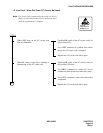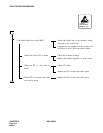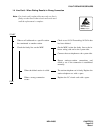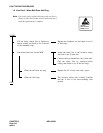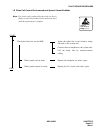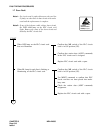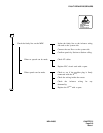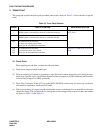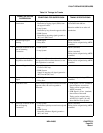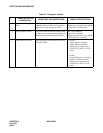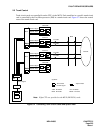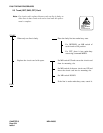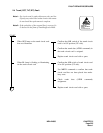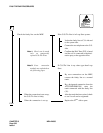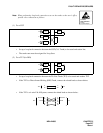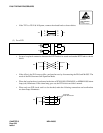
NDA-24300 CHAPTER 5
Page 321
Issue 1
FAULT REPAIR PROCEDURES
Table 5-4 Timings for Trunks
ITEMS FOR STATUS
SUPERVISION
CONDITIONS FOR SUPERVISION TIMING SPECIFICATIONS
1 Detection of Call
Termination
• Ring Down System
Detection by ringing signal (20Hz) from
the opposite office.
• Loop System
Detection by loop from the opposite office.
• E&M System
Detection by incoming signal (ground or –
48V) on E (RG2) lead.
Ringing signal of more than 4 cycles
is detected within 800 ms.
Detection within 16 ms after call
termination.
2 Acknowledge Signal
Sending
• Wink Signal
• Delay Start
160 ms (standard)
Timing can be assigned using ARTD
command.
3 Detection of Release at the
time of Incoming
Connection
• E&M System
• Loop System
288 ms (standard)
160 ms (standard)
Timing can be assigned using ARTD
command.
4 Timing for Restricting Call
Origination after Release
After release of the user’s trunk or the trunk at
the opposite office has been detected, a new
call origination is restricted.
3070 ms (standard)
Timing can be assigned using ARTD
command.
5 Seizure of Opposite Office • Loop System
Closure of DC loop.
• E&M System
Supply of outgoing call signal (ground or –
48V) onto M (DL) lead.
6 Detection of Acknowledge
Signal
• Wink Signal
• Delay Start
Timing is assigned using ARTD
command.
7 Trunk Hold Time Even if answer signal has not reached from the
opposite office, the call is regarded as
answered.
• If DP Signal is 10 sec. (standard)
after dial pulses are sent out
Timing can be assigned using
ARTD command.
• If PB Signal is 30 sec. (standard)
after seizure of the trunk
Timing can be assigned using
ASYD SYS 1 Index 156 (only
when 2nd Dial Tone System).
8 Detection of Release at the
time of Outgoing
Connection
• Loop System
Detection of polarity reversal across tip and
ring.
• E&M System
Detection of Release Signal (ground or –
48V) on E lead.
608 ms (standard)
Timing can be assigned using ARTD
command.



